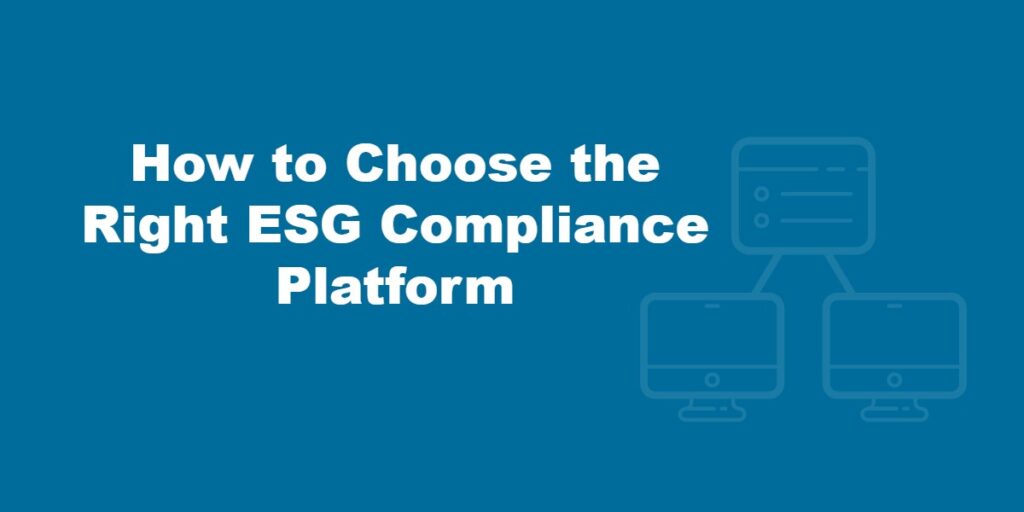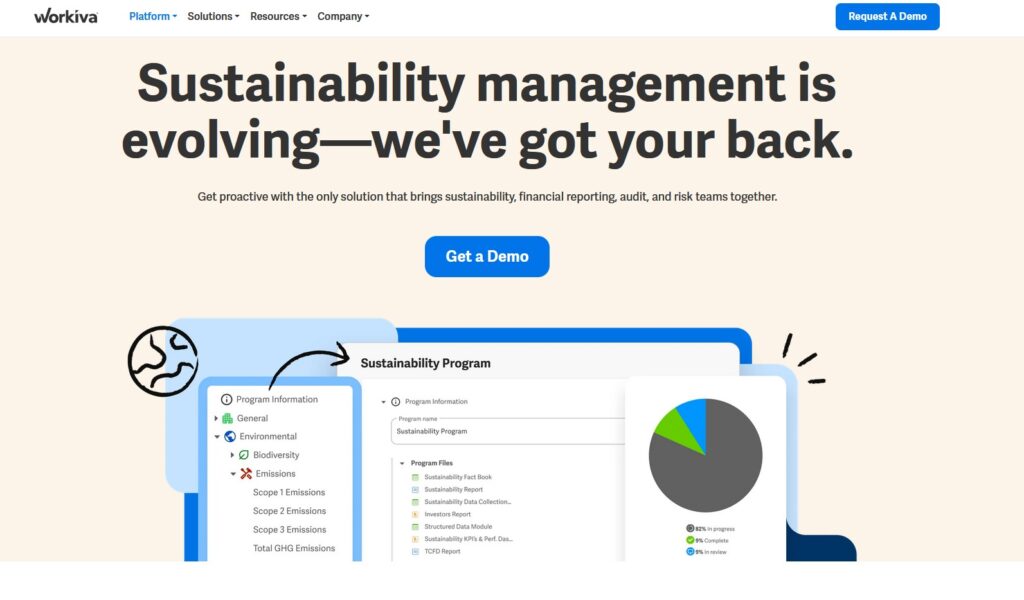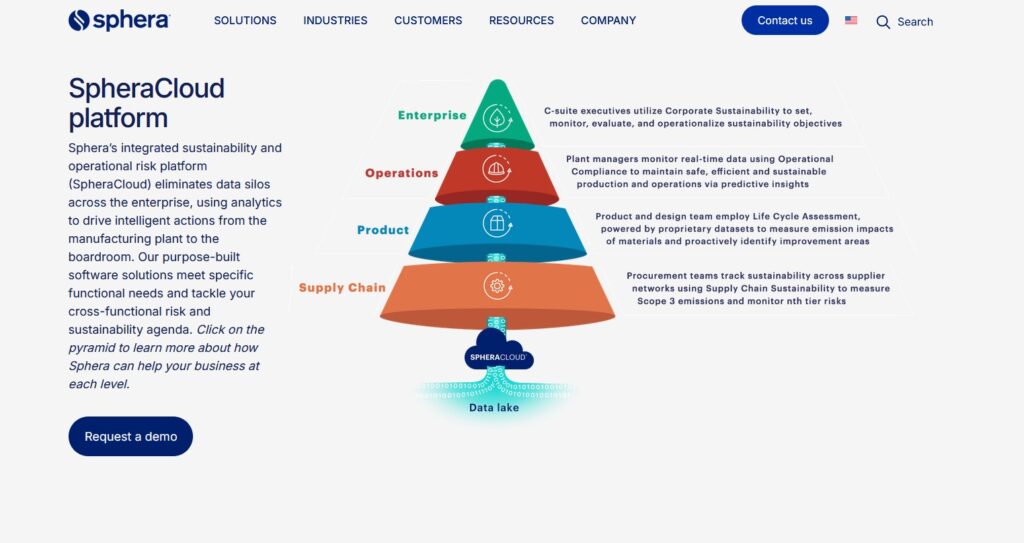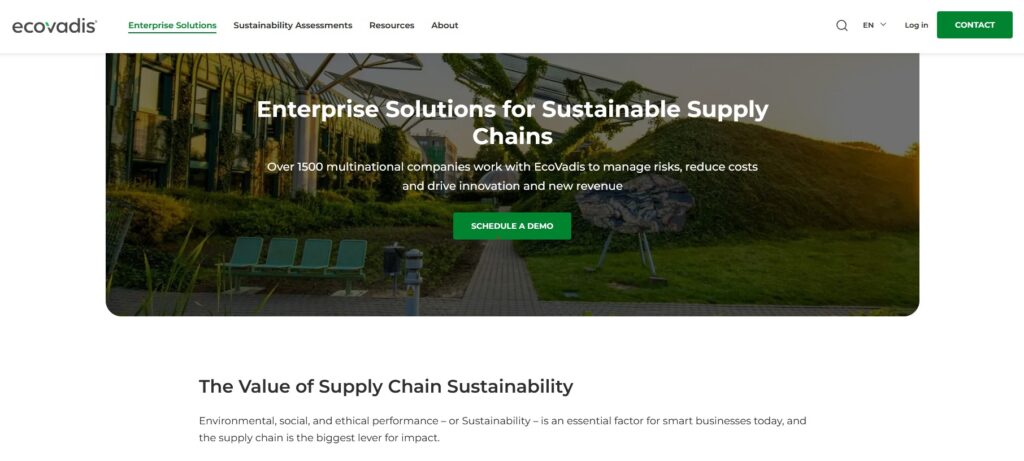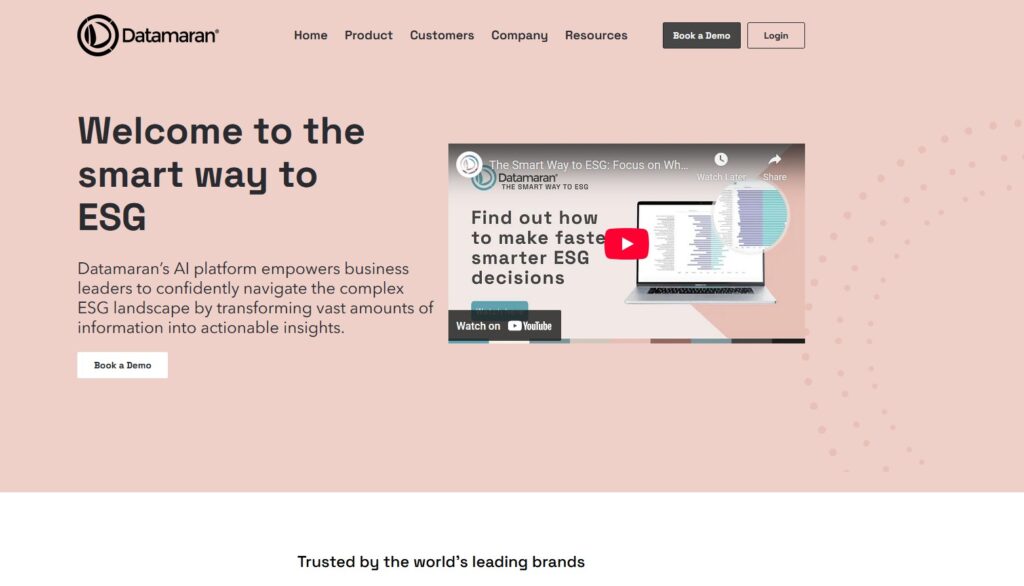With growing concerns about climate change, companies are under intense pressure to reduce their carbon footprint. More importantly, they are expected to demonstrate their positive impact on the environment and society. In some cases, governments and regulators mandate companies to take steps toward fulfilling their obligations to the environment and society.
To showcase the commitment and effort of organizations, the Environmental, Social, and Governance (ESG) framework was created. These standards measure the efforts of organizations across different parameters and offer practical ways to improve on them.
However, the key is to select the right ESG compliance platform that will provide the insights you need to improve your ESG reporting. In this guide, we will look at the different options to consider while choosing the right ESG compliance platform.
What is ESG?
ESG stands for Environmental, Social, and Governance – the three pillars that evaluate how a company fulfills its environmental and social obligations. As the name suggests, the environmental component focuses on how a company interacts with the natural world. Specifically, it evaluates how companies handle carbon emissions, energy usage, waste management, water consumption, and more.
The Social component deals with how companies treat people. Does the company follow established labor practices? What are its diversity and human rights policies? Investors and customers need tangible proof of a company’s social commitments.
Lastly, governance is the internal structure of the company. It focuses on executive compensation, implementation of internal policies, data protection strategies, and more.
These ESG criteria evaluate the non-financial performance of an organization.
What are ESG Platforms and Why Do You Need One?
ESG platforms make it easy for organizations to meet the ESG standards and regulations. They evaluate the current state of the organization and provide insights on the required steps to achieve their ESG goals. Most ESG platforms also come with advanced reporting that helps internal decision-makers as well the auditors to better evaluate the organization’s performance.
Today’s ESG platforms act as a centralized system for storing and analyzing data, thereby eliminating the need for manual spreadsheets and disparate reporting tools. More importantly, they enable businesses to create workflows to improve their performance, while providing the required control and visibility to manage the activities.
Another advantage of ESG platforms is that they support multiple ESG standards, so you can use the same platform to comply with different frameworks. Some platforms even come with capabilities for double materiality assessment, risk mitigation, supply chain evaluation, vendor assessment, and more. A lot of them integrate with internal systems for a smooth flow of data and analysis.
Together, all these features make ESG platforms an integral part of the tech stack for companies that want to meet these standards.
Now that you know the importance of an ESG platform, let’s move on to how you can select the right one.
Steps to Choosing the Right ESG Platform
Given the importance of an ESG platform for your reputation and non-financial performance, it’s important you pick one that aligns with your goals and existing tech stack. Here’s a structured way to select an appropriate platform.
Step 1: Know Your ESG Requirements
As a first step, evaluate the different ESG standards and decide which ones you want to meet. To a large extent, this decision depends on the nature of your business and the geographical region in which you operate.
For example, if you are in the EU, the Corporate Sustainability Reporting Directive (CSRD) is mandatory. On the other hand, if you’re a publicly listed company in the U.S., the SEC’s climate disclosure rules apply. Likewise, financial firms must meet the requirements of the Sustainable Finance Disclosure Regulations (SFDR). Besides these mandatory requirements, some organizations may also choose to voluntarily follow other standards.
Make a list of all the standards and identify platforms that support all of them.
Step 2: Form a Cross-departmental Team
ESG is never owned by any single team because it requires data across teams. For example, the finance department deals with risk disclosures and payment structures, while the HR department is responsible for implementing diversity initiatives. The legal team oversees disclosures and governance, while the IT teams are responsible for integrations and tracking. Since every department is a contributor, make sure you form a cross-departmental team consisting of representatives from each of them.
Step 3: Integration and Automation
The platform you choose must integrate well with your tools and platforms, like ERP, HR, procurement tools, and more. This is a critical aspect because a smooth integration allows for the easy flow of data across platforms. Such integration will result in better notifications and in real time. Also, it will reduce administrative burden and will result in the generation of meaningful reports.
Many ESG platforms offer APIs that can be used for integration with custom apps, so make sure you check with the vendor for out-of-the-box connectors if they don’t have native support for specific tools.
Step 4: Feature Evaluations
By now, you must have narrowed your choice to a few ESG platforms, making it easier to compare feature sets. Specifically, look for the following aspects.
- Report generation.
- Automation.
- Real-time notifications.
- Security considerations.
- Data handling, especially estimation, as it is required for Scope 3 emissions.
- Baseline comparisons.
- Customizable dashboards.
Besides these common features, check if you require any other feature specific to your operations. Accordingly, evaluate the tools and further narrow down your list to those platforms that meet all your feature requirements.
Step 5: Test Reporting and Dashboard
One of the key aspects of any ESG platform is the availability of a centralized dashboard and extensive reporting capabilities.
A centralized dashboard can provide detailed visibility into the metrics and their performance, so you can make the necessary changes to improve. It can also come in handy to evaluate the impact of specific policies on your ESG compliance.
Similarly, reporting is another important feature. Ideally, you want the tool to come with built-in templates for different standards, so you can just plug in the values to generate the reports. This capability makes it much easier for your team to meet the reporting requirements.
Step 6: Audit Trails
ESG data is often scrutinized by government officials and auditors to check for compliance with the required standards. To support this, your tool must have a clear audit trail and an option to connect evidence at every step. Also, the ability to trace a metric to a source helps build trust among external stakeholders and comes in handy during audits.
Step 7: Usability and Scalability
Your selected tool must have a user-friendly interface and must be easy to use for employees of all technical skills. Such tools have wider adoption and can boost the productivity of your entire team.
Similarly, the tool must be scalable to include more data volume and metrics. This is important if you plan to extend to more geographies that may require you to meet additional ESG standards.
Step 8: Pricing and Contract
Finally, check the pricing and make sure it meets your budget. In general, choose value and return on investment over just cost, as this is a better measure of how the tool can impact your organization’s operations. Along with the cost, evaluate the vendor’s terms and conditions and the contracts. Specifically, check the implementation and maintenance aspects. Also, make sure the selected vendor offers 24/7 support.
When you use the above factors to select an ESG platform, you’re sure to find one that best aligns with your goals and operations.
Next, let’s look at some popular ESG platforms.
Popular ESG Platforms
The following ESG platforms work well for most organizations, and they meet the criteria we discussed above. However, run through their features again, if you pick any of them, to check if they adjust to your requirements and tech stack.
Workiva
Source: Workiva
Workiva is a reporting and compliance platform that meets the requirements of most ESG standards. It also allows organizations to connect their ESG data directly with financial reports for better visibility and seamless data flow. It supports collaboration among teams as well.
Key Features
- Integrates ESG, financial, and regulatory reporting into a single platform.
- Supports GRI, CSRD, CDP, TCFD, and SEC reporting.
- Provides version control and collaboration features for report drafting.
- Comes with built-in XBRL/iXBRL tagging for financial and ESG filings.
- Generates complete audit trails.
SpheraCloud
Source: SpheraCloud
SpheraCloud is an advanced ESG platform designed for companies with complex reporting requirements. It is particularly effective for carbon accounting and ESG data management for organizations in the energy, manufacturing, and chemicals sectors.
Key Features
- Supports emissions tracking and EHS compliance.
- Ideal for meeting the requirements of GHG protocols, science-based targets, and multiple ESG frameworks.
- Offers real-time data capture from environmental systems and meters.
- Integrates risk and sustainability.
- Generates scenario analysis for carbon reduction and sustainability planning.
EcoVadis
Source: EcoVadis
EcoVadis focuses on assessing ESG risks across your supply chains. It helps assess vendors and their compliance levels with established standards. This tool is well-suited for procurement and compliance teams to check if the selected vendors align with the global sustainability criteria.
Key Features
- Generates supplier ESG ratings based on international standards.
- Offers scorecards that span across environment, labor, ethics, and procurement.
- Provides supplier engagement tools and improvement tracking.
- Comes with a network of 100,000+ suppliers who meet international standards.
Datamaran
Source: Datamaran
Datamaran uses AI to monitor ESG risks, regulations, and stakeholder expectations. It is a good choice for companies that want to perform double materiality assessments or respond well to fast-changing ESG trends.
Key Features
- Automates double materiality assessment.
- Comes with executive dashboards for ESG strategy alignment.
- Maps emerging issues across geographies and sectors.
- Integrates well with internal planning and reporting systems.
Thus, these are some of the best ESG platforms that can suit the most common requirements.
Final Thoughts
To conclude, ESG compliance is becoming a mainstream regulation because of growing concerns about the climate and societal obligations. Since these aspects are closely scrutinized by governments, regulators, investors, employees, and customers, many organizations are looking to implement a streamlined approach to comply with ESG standards. The steps described in this article can help you select the most appropriate ESG platform for your needs.
